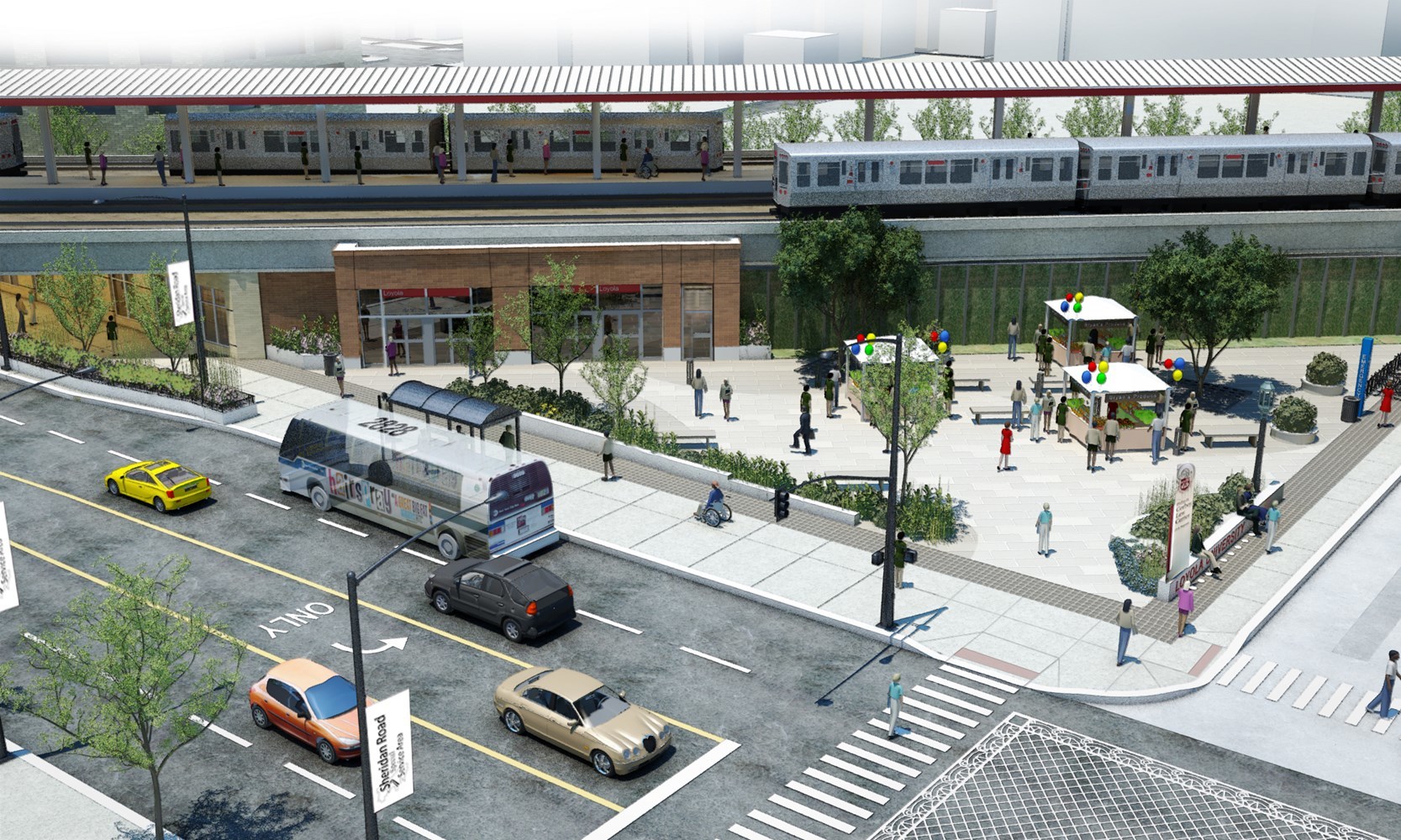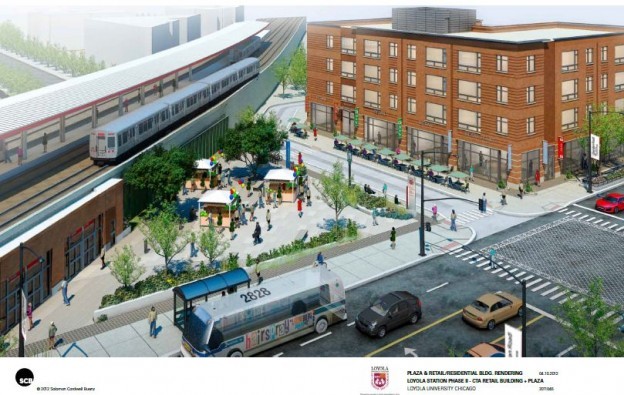Note: This is an archived page from 2013. Work detailed on this page has already occurred.
CTA, the Federal Transit Authority (FTA) and Loyola University, with the help of Senator Dick Durbin, worked together to rebuild the Loyola station on the CTA Red Line.
The project helped stabilize existing infrastructure, upgrade the existing station and redirected pedestrian traffic away from the mid-block Sheridan Road crossing in front of the station for improved safety. The main entrance was relocated slightly north, along the embankment, to allow for a new pedestrian plaza and a more inviting path in and out of the station, with better visibility.
 The project upgraded Loyola station with a bright, new ground-level station house with safer, more convenient access from the new plaza north of the station, as well as from Loyola Avenue on the west side of the station. The project also rehabilitated the viaduct across Sheridan Road, providing concrete repairs, new trackwork and brighter lighting.
The project upgraded Loyola station with a bright, new ground-level station house with safer, more convenient access from the new plaza north of the station, as well as from Loyola Avenue on the west side of the station. The project also rehabilitated the viaduct across Sheridan Road, providing concrete repairs, new trackwork and brighter lighting.
The Loyola renovation project is part of the CTA’s $1 billion Red Ahead capital investment initiative announced in November 2011. Project funding was sourced through a combination of federal funding from the fiscal year 2010 Transportation and Housing Appropriations Bill, as well as Safe, Accountable, Flexible, Efficient Transportation Equity Act (SAFETEA-LU) funds.
Work was performed by contractor Kiewit Infrastructure, who won the $5.7 million contract for these improvements through a competitive bid process.
The Loyola station was rebuilt in 1980-82, and was among the first CTA stations to be equipped with an elevator.
Work to renovate the station and viaduct began in August 2012 and was complete by mid-2013.
On this page:
What improvements were made to the station?
As a result of the project, the Loyola station received the following improvements to benefit our customers:
- A renovated, modern station house facing a new plaza on the north side of the embankment. The improved station house includes:
- A new front entranceway
- New windows, flooring and interior finishes
- Additional turnstiles
- New lighting
- New High-Barrier Gate (HBG) turnstiles on Loyola Avenue, providing direct and convenient access to the main station house from the south and west of the station
- New signage, including Braille
- Additional bike parking
- A renovated viaduct over Sheridan Road, including:
- Concrete repairs
- Painting/coating
- New, brighter lighting under the viaduct
- New waterproofing and drainage system
- New track in area of the viaduct
- Improved circulation around the station for pedestrian safety, including redirecting pedestrian traffic away from the current mid-block Sheridan Road crossing in front of the station.
How did this affect commuters?
Importantly, the Loyola station remained open throughout the project. Construction was staged in phases to maintain access and minimize impact on regular use of the station.
During the project, portions of the station's interior were barricaded and passenger flow rerouted around the enclosed active work areas.
To rehabilitate the viaduct and replace the trackwork, trains were temporarily rerouted to adjacent tracks. In some cases, this resulted in trains bypassing the station in one direction only without stopping (but continuing to serve the station in the opposite direction of travel). These reroutes were limited to nights and weekends only.
Every effort was made to minimize the impact to customers during this rehabilitation project. As with any major changes in service (i.e. work resulting in trains bypassing the station in one direction), notices/flyers were posted ahead of time.
What was the project timeline?
The construction contractor, Kiewit Infrastructure, was given Notice to Proceed on July 3, 2012. Construction work at the station began on August 1 and was completed by mid-2013.
What does the renovated entrance look like?
Here are some renderings of the planned look of the new Loyola station entrance and plaza:


Note: Details in the final design and station construction may differ from this rendering.